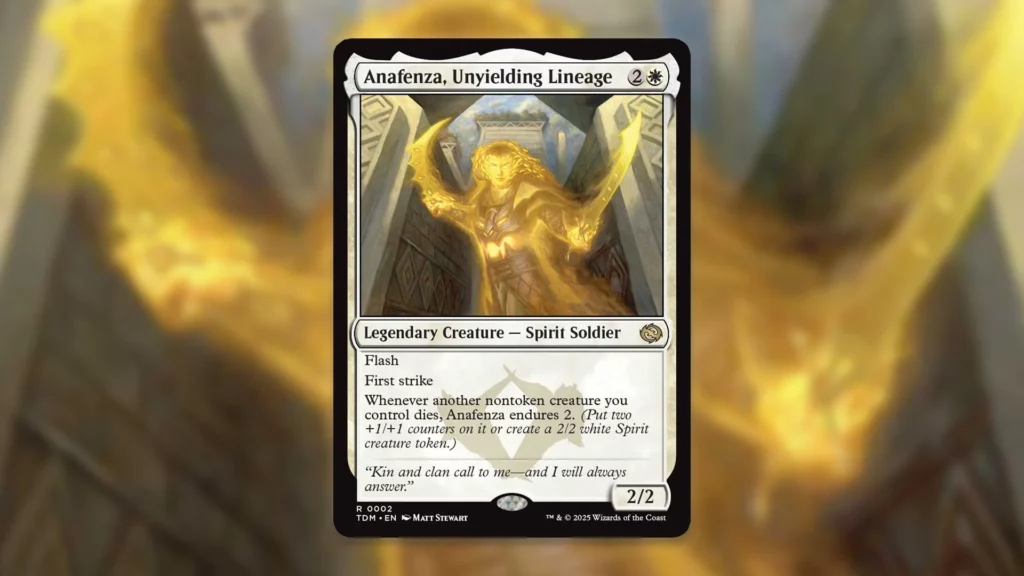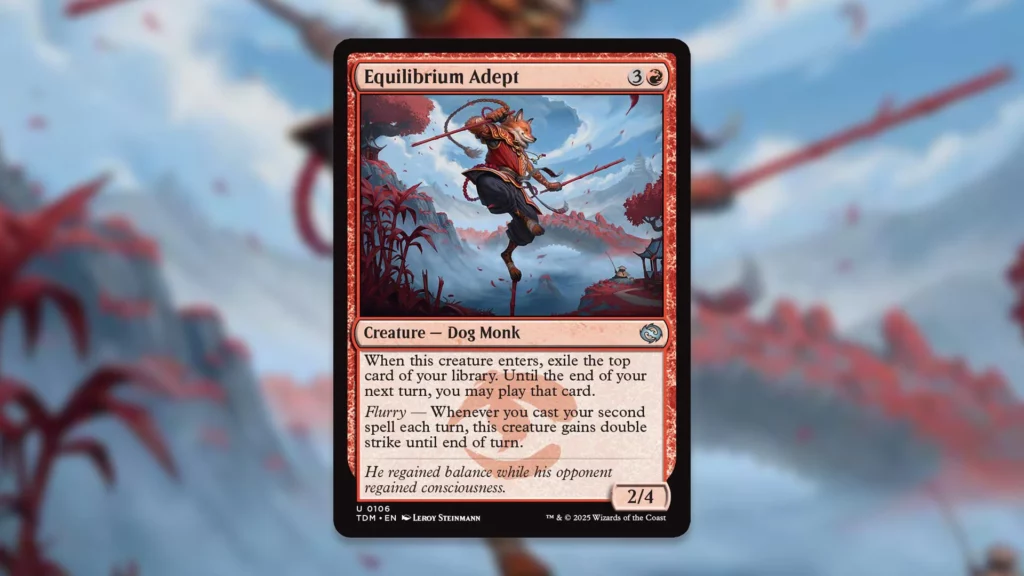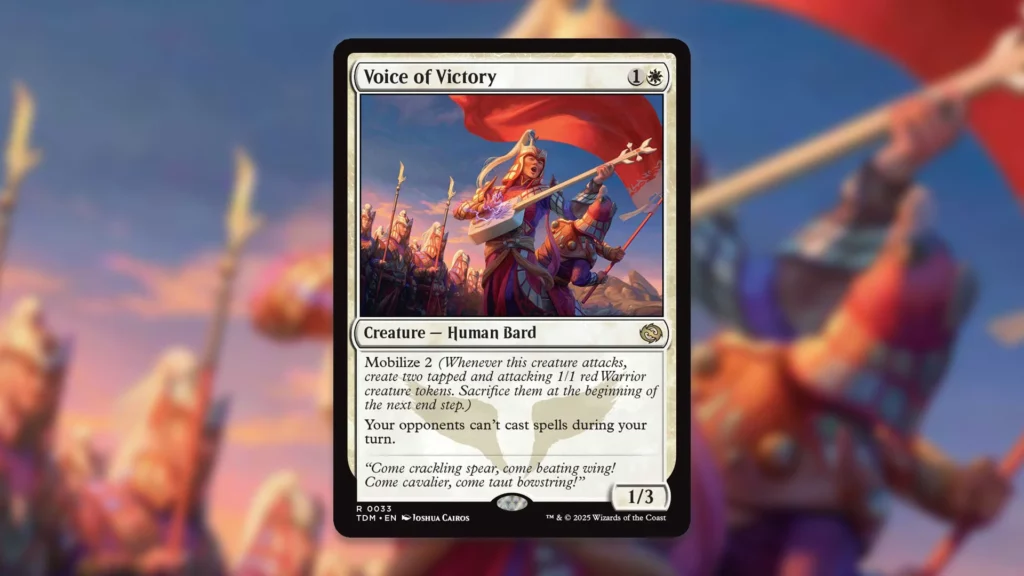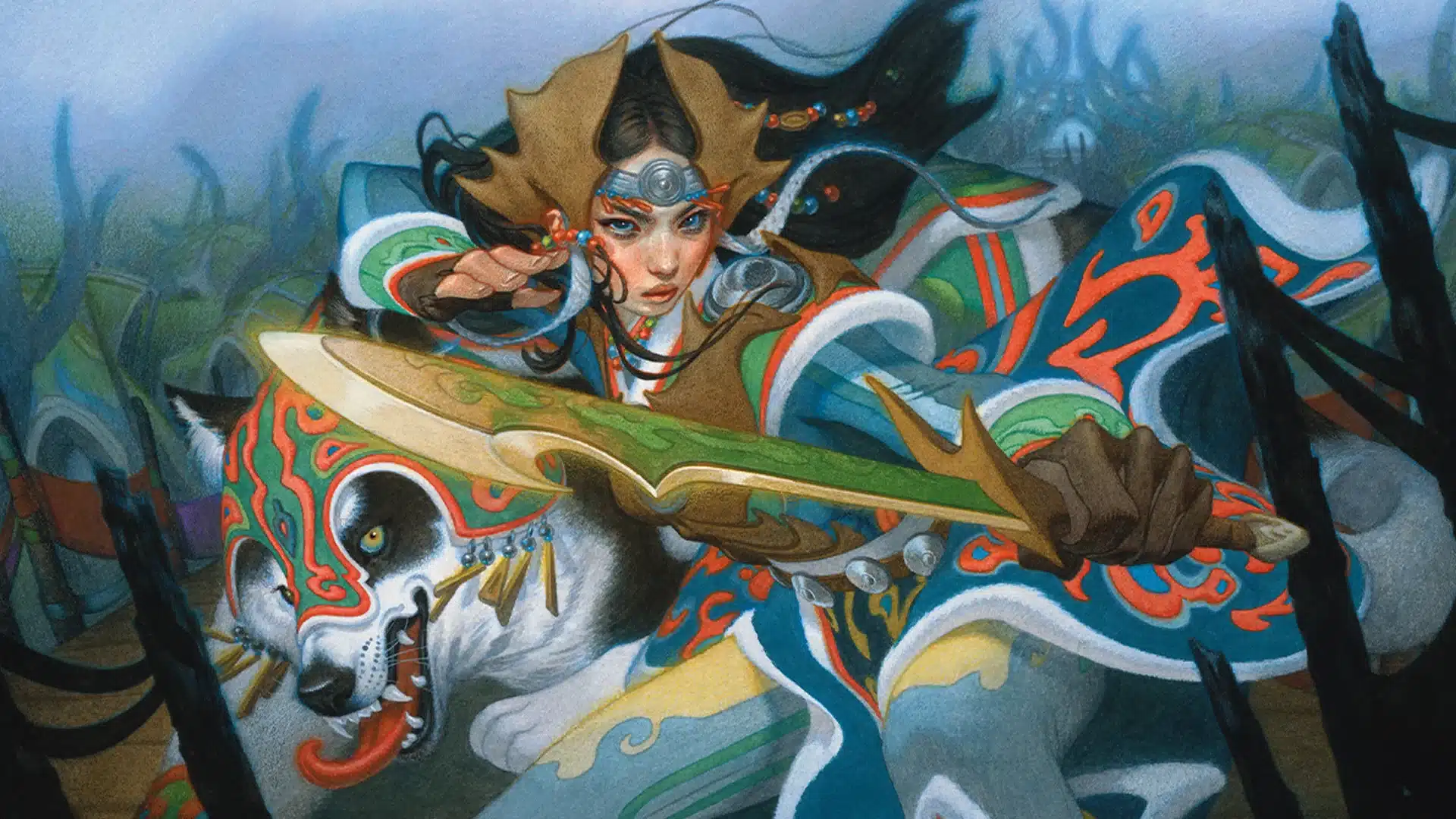The spoiler season for Tarkir: Dragonstorm is officially underway. As usual, Wizards of the Coast’s debut livestream for the event kicked things off with one hell of a bang. Not only did we get to see plenty of awesome new cards, but there’s tons of art and fantastic reprints too! As if all that wasn’t enough, this set is introducing six brand-new MTG mechanics into the fold.
As you might expect given Tarkir: Dragonstorm’s themes, these new mechanics are mostly neatly divided between the set’s five clans. Thankfully, this makes keeping track of the mechanics fairly simple, since they only appear on that clan’s cards. Conveniently, these clan cards will each feature the watermarks from the original Khans of Tarkir so they should feel very cohesive.
As far as the mechanics themselves go, Tarkir: Dragonstorm doesn’t push the boat out too much. Since there are six brand-new mechanics, however, it’s well worth looking at them closely so you don’t get caught out. Given how powerful Tarkir: Dragonstorm looks to be, there’s a real potential you’ll be seeing these a lot in Standard going forward.
Omen

Before we get to all the new clan mechanics in Tarkir: Dragonstorm, it’s worth looking at this Omen. At first glance, you might think that this is just an Adventure, however, that’s not the case. While these two mechanics do function similarly to one another, Omen is different in one major way. When you cast an Omen spell, the card gets shuffled back into its owner’s library.
Similarly to Adventures, Omen spells provide extra utility, usually at an extra cost, since you can choose what you need at that moment. Unlike Adventures, however, you don’t get the best of both worlds since the card is shuffled away after playing. This does leave it in your deck to play again later, but losing the creature is nonetheless a hit.
Nevertheless, provided the cost isn’t too steep, a creature having an Omen ability is no bad thing. You can always choose to just cast the creature normally, so the Omen won’t matter in those instances. Notably, just like Adventures, you can only cast the Omen half of a card when it’s in your hand.
Endures

Not to be confused with Duskmourn’s enduring enchantments, Endures is a brand-new mechanic for the Abzan clan. This mechanic makes your creatures dying substantially less punishing. Whenever a nontoken creature you control dies, you get +1/+1 counters or create a Spirit token. The number of +1/+1 counters you get, and the strength of the Spirit, depends on the strength of the Endures ability.
So far, we’ve only seen Endures 2 on Anafenza, Unyielding Lineage. From what Wizards told us during a press briefing, there will be creatures with other Endures strengths. Potentially, this means there might be an engine that’s capable of pumping out surprisingly beefy Spirits, or tons of +1/+1 counters.
For now, it’s unclear just how strong a single Endures creature can be. What is clear, however, is that this ability will provide some extra resilience to Abzan decks. As a reminder, Endures does not trigger on nontoken creatures, which means that Spirits created by Endures will not continually create creatures. The counter half, however, can create havoc with infinite death combos, which is nothing new for MTG. Notably, Endures creatures could be quite spicy within an Aristocrats archetype, thanks to providing more sacrifice fodder.
Flurry

Unsurprisingly, the Jeskai clan’s mechanic cares about you casting spells. Specifically, Flurry focuses on the moment you cast your second spell each turn and provides you a benefit for doing so. In the case of Equilibrium Adept, the creature will get Double Strike, which has them hitting like a 4/4.
While Equilibrium Adept may not be the most exciting MTG card ever printed, Flurry certainly has potential. Depending on the abilities connected to this mechanic, Jeskai decks could get a serious boost. Hopefully, this will shore up control-focused decks, rather than giving aggro yet another push. This seems unlikely, however, since Flurry rewards you casting spells while control wants to hold them for as long as possible.
Thankfully, hitting Flurry should be fairly easy if you build your deck around it. Not only are there tons of cheap and effective spells in MTG at the moment, but Plot exists too. This Outlaws of Thunder Junction mechanic allows you to delay your spells, ensuring that hitting Flurry is a breeze.
Mobilize

Given that the Mardu clan is all about combat, it’s no surprise their mechanic in Tarkir: Dragonstorm cares about attacking. Whenever you attack with a creature with Mobilize, you get 1/1 red Warrior tokens based on the ability’s number. In the case of Voice of Victory, you’ll get two 1/1 red Warrior tokens whenever it attacks.
At its core, Mobilize is obviously an aggressive mechanic that should hopefully sneak in some chip damage if nothing else. While these tokens don’t stick around beyond the end step, they nonetheless help you to go wide. If you throw in a token doubler or two, like the new Elspeth, then this mechanic could seriously hurt.
As always, the strength of the Mobilize mechanic will depend on what creatures it’s printed on. If there are some low-cost and decent statted threats with it, then it might see plenty of Standard play. Voice of Victory is already powerful enough to easily see Standard play, but Mobilize is awkward with it. While Mobilize does help Voice of Victory pile on the pressure, this really isn’t a card you want to attack with and risk losing.
Renew

While the aesthetics of Sultai may have been toned down some, the mechanic is still rather macabre. Leaning into the love of repurposing fallen creatures, Renew lets you exile the card from your graveyard to buff your board. From what we’ve been told, most of the time this will just be +1/+1 counters, but it evidently gets more interesting.
On Qarsi Revenant, paying the Renew cost will give a target creature Flying, Deathtouch, and Lifelink counters. This will make any creature a very scary threat on the board, and Qarsi is no slouch in the first place. While it’s unclear how popular the Renew mechanic will be overall, there’s a very real chance this specific creature will do work.
Harmonize

Last, but by no means least, Harmonize is the mechanic for the Temur clan in Tarkir: Dragonstorm. Previously, this clan was all about big creatures and the Ferocious threshold. Thankfully, this love for big creatures hasn’t gone away, even if Temur cares about casting spells now, rather than all-out might.
To that end, Harmonize allows you to cast spells from your graveyard for an increased cost. On the surface, this is fairly similar to Flashback, however, there is a Temur trick up this mechanic’s sleeves. If you tap a creature you control, you can reduce the cost of Harmonize by that creature’s power.
Potentially, this can make spells like Ureni’s Rebuff cost just one mana, which is very interesting. If there are removal, protection, and pump spells that can be brought this low, Harmonize could be seriously powerful. That being said, tapping down one of your major threats could leave you exposed.
Whether or not Harmonize sees much play will likely come down to whether or not it appears on many instants. Unless your board is absolutely monstrous, tapping down a big threat to recast a sorcery could leave you vulnerable. Being able to do that right at the end of your opponent’s turn for cheap extra value, however, would be a game changer.
Ultimately, we’re just going to have to wait and see what Harmonize brings during Tarkir: Dragonstorm’s spoiler season. Thankfully, now that this has begun in earnest, we won’t have to wait long for more.
